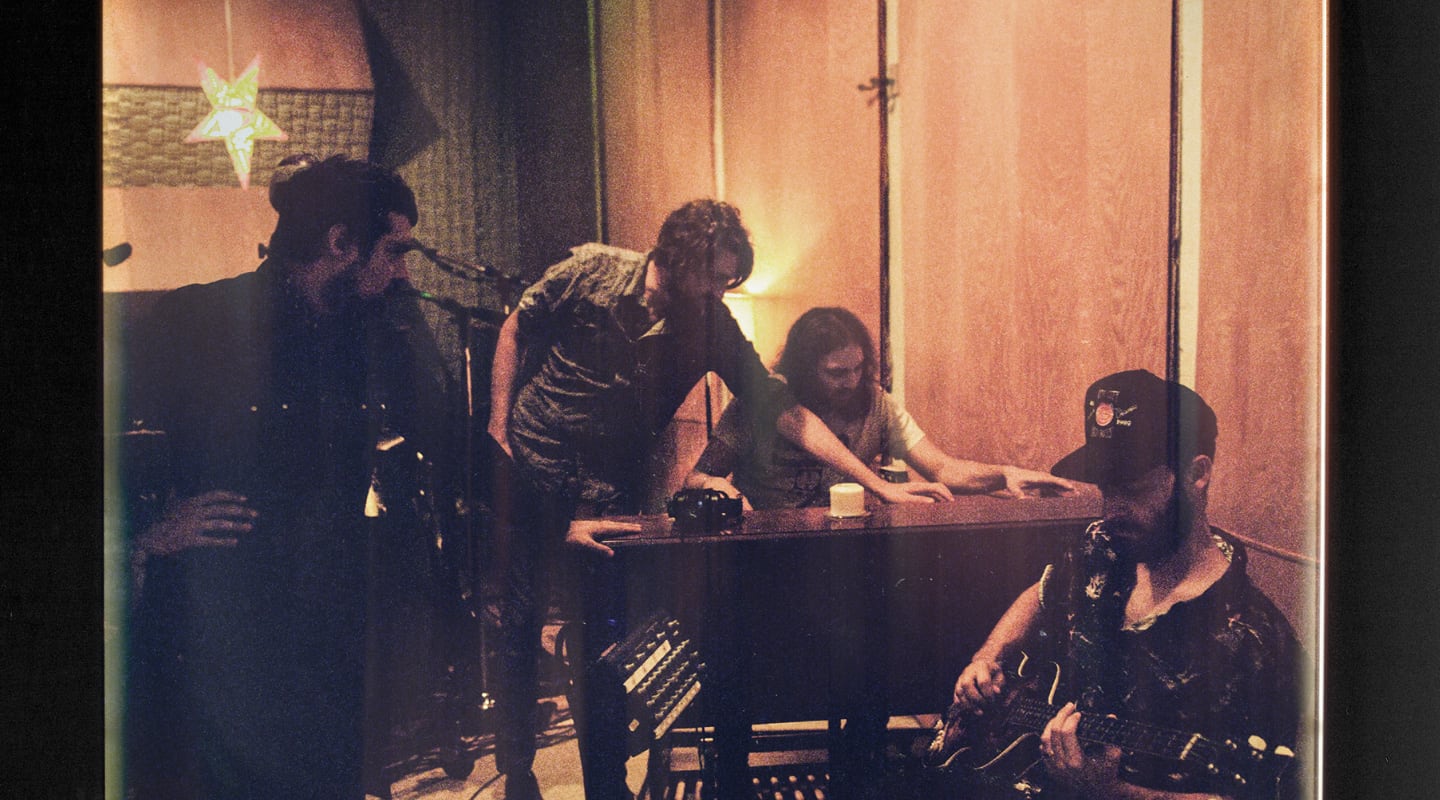
Layers of Pain
Constantly starting from scratch, stacking layers on layers, chasing the tail of the ’80s, and mixing songs six times in six different studios. This is the story of how The War on Drugs uncovered A Deeper Understanding.

Artist: The War on Drugs
Album: A Deeper Understanding
The War on Drugs’ leader, Adam Granduciel, has a habit of wearing his heart on his album sleeves. Granduciel admitted to having suffered from anxiety and endless second-guessing while making 2014’s Lost in the Dream, noting, “I started going off the rails a little bit, in my own head. Getting a little too sucked in.”
Three and a half years later, on the follow-up, A Deeper Understanding, a rejuvenated Granduciel is able to embrace his elaborate creative process. However, while he may have come to terms with it, that anxiety transferred to engineer and mixer Shawn Everett. During our interview, Everett opened up about anxiety attacks of his own that echoed Granduciel’s own recollections of making Lost In The Dream.
“Adam told me about the time he wanted to be a painter,” began Everett. “He had this layer approach where he would paint, scrape away, then repaint, and so on. That’s what it felt like he was doing while we were working in the studio; him adding crazy amounts of passes and uncovering all kinds of layers in a song, and us going crazy trying new guitar setups, different amps, pedals, and keyboards. After months of working like that on a song, he might mute it all and do several other rounds of guitars! Working on the album was an endless process of layering and scraping, and layering and scraping.
“Part of my job was to be the archeologist and keep track of everything. Riding volumes to let certain parts shine and ensure the strongest melodic elements kept surfacing. On top of all that, we worked in several different classic studios — Boulevard Recording, EastWest, and United Recorders in LA, and Electric Lady and Thump Recording in NY. Every time we went into a new room I would re-amp the snare drum, kick and other instruments, to capture the ambiences of all these rooms. I had tons of different layers and vibes from all those studios! As a result, I ended up with hundreds and hundreds of tracks per session, to the point where you would go cross-eyed just looking at it! Plus, I’d use the desk and outboard in each studio to do a rough mix. I mixed most songs six times, in six different studios!”
The mental intensity was only exacerbated by Everett’s obsession during his mix process to try to “be as good as Bob Clearmountain’s classic mixes from the 1980s, like Roxy Music’s Avalon! Every time I got a mix to a certain spot I would compare it to one of his mixes and it was like, ‘Nooooo!’ My mix still didn’t match up! I just wanted to get a classic feeling that would stand up to these timeless records or at least have some kind of close proximity to that. It was driving me out of my mind.”
MAJOR LABEL MOVES
The product of Granduciel’s endless layering process and Everett’s ‘crazy obsessiveness’, is a depth to A Deeper Understanding’s mixes that effortlessly showcases all the details, while not losing the heart of the album’s 10 songs. Lost in the Dream was a breakthrough success for the band which led to a deal with Atlantic Records. Unphased by signing to a major, the band’s first single from A Deeper Understanding was a 14-minute epic called Thinking of a Place.
While waiting for a flight to Portland, Maine, where The War On Drugs were scheduled to perform, Granduciel explained, “I was trying not to think of it as being my first major label record, but one of the consequences was that I had a bigger budget to work with. Still, I tried to stay true to the record-making process I’ve developed over the years. I wanted to make sure I used all the tools I’m familiar with and the sounds I like. I continued to try to become better at playing guitar, production, piano, and have material I felt was a step up for me and a little bit more challenging to figure out.”
In addition to the bigger budget, a couple of other changes during the making of A Deeper Understanding had a major impact. First of all, Granduciel relocated from his home base in Philadelphia, Pennsylvania to where his girlfriend lived in Los Angeles. Granduciel brought over some of his gear, and rented a studio called Sonora for 16 months, where he’d “go every day to write, build songs up, and record demos.” The other big change was the close collaboration with Shawn Everett, who Granduciel contacted because he’d read an interview written by yours truly detailing Everett’s stunning and Grammy Award-winning engineering and mixing work on the Alabama Shakes album Sound & Color.
Granduciel: “Sonora has been there since the early 1990s and has a great microphone collection, some really cool outboard gear, and quite a few nice keyboards. I also brought some of my favourite microphones over from my studio in Philadelphia, for example my Sony C37A, which is my main vocal mic, several keyboards, and some of my outboard, like my Roland Chorus Echo, Retro Instruments stereo tube EQs, and my MCI desk. A few years ago I bought a 3M M79 24-track tape recorder, and I used that to record demos, but it needed a lot of maintenance work, so for this album we were working mainly with Pro Tools. I love Pro Tools. I like collecting awesome outboard and esoteric vintage stuff, but Pro Tools is f**king awesome for arranging songs. It’s the way to realise your dreams.”
I mixed most songs six times, in six different studios!
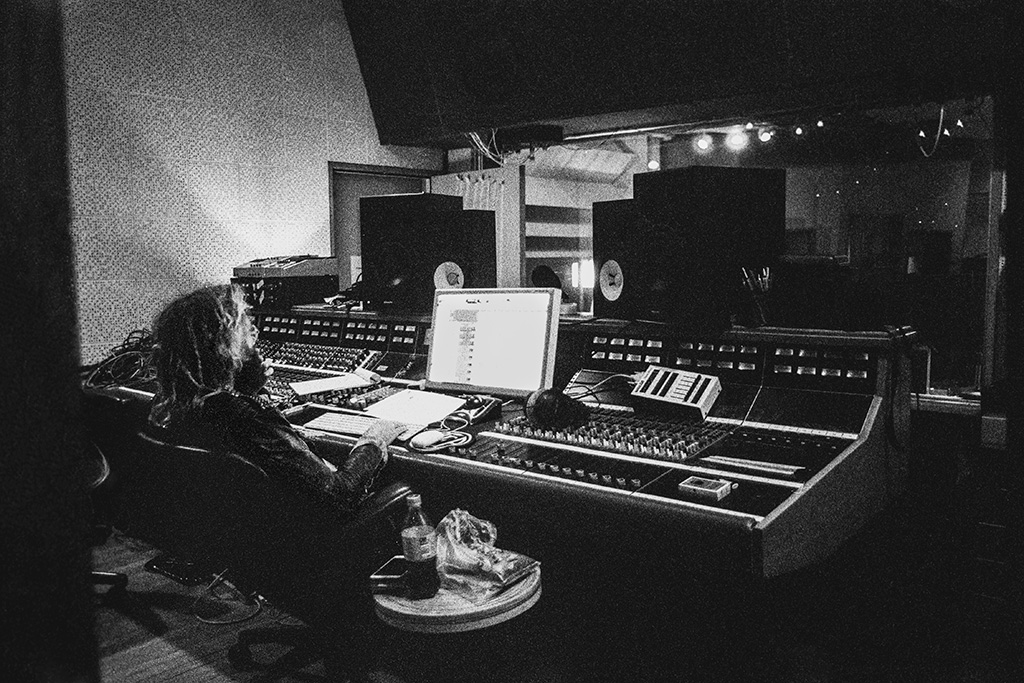
LINNDRUMMING IT IN
Granduciel’s recording process mirrors the way he circles around a subject on the phone, repeatedly probing it from different angles, rather than divulging a narrative beginning to end. It’s as if his arrangements are floating around in a cloud of Pro Tools sessions before the final mesmerising and hypnotic version pours out.
“I usually work in the studio,” Granduciel explained about his songwriting process. “I write little bits on the guitar, or the piano, but these don’t really turn into songs until I lay down a drum machine — often a LinnDrum — in Pro Tools and commit a chorus or other idea, and then create a demo. After a couple of months working that way at Sonora the band came over from Philadelphia, as did Shawn, and we set up in my studio. I’d play them the demos and we’d record the songs as a band with more groove and dynamics.
“Pain was one of the first songs I wrote, and the first thing the band recorded with Shawn. We were really confident, but after a couple of hours it almost sounded too rock, like we were overplaying it. I said, ‘let’s turn it down and chill,’ and we recorded Thinking of a Place. Parts of that take, the first three minutes and the outro, ended up on the album. It was a really sweet vibe, so I suggested we record Pain again in that same mood. After four takes we had recorded the album version of Pain. I spent the next nine months adding, subtracting and arranging the song in Pro Tools. In between band sessions I would go in and reinvent the songs, record guitars, some piano, some Wurlitzer, whatever, trying to give the songs a new framework. Sometimes I just really need to be alone in order to end up somewhere I didn’t expect to go. Shawn would also start messing with the songs in his way, and everything really started to come to life.”
IN SOMEONE ELSE’S HEADSPACE
Everett is also prone to endless tinkering, and it’s served him well in a career that’s taken off this decade. He’s a Canadian who attended the audio program at the Banff Centre in Alberta, Canada before moving to LA in 2005 where he cut his teeth at producer Tony Berg’s Zeitgeist Studio. Over the years Everett’s credit list has become ever more impressive, with big names like Weezer, Alabama Shakes, John Legend, The Killers, and Kesha.
Still, he took this tendency to extremes while working with Granduciel because, “I like to work inside of somebody else’s process; I like to get into their headspace. I started feeling what Adam was feeling when working on his previous record.”
Everett vividly recalls entering Sonora Studios for the first time to record the very first band session for A Deeper Understanding: “Adam had sent me demos, which were like starting points. They were not quite fleshed out; basically they were extended chord sequences, sometimes up to 15 minutes long with a drum machine, usually a Linn, guitars and keyboards, and sometimes some actual vocal melodies. Each one of them provided enough of a basic structure to begin recording a song. The band would record over the top of a demo he had created, with the LinnDrum as a click track for the drummer. After that I’d usually mute the Linn and everything that was on the original demo. Then we worked with what the band had played.
“The band takes were often 15 minutes long, and Adam generally didn’t like to edit those performances down right away. He’d pick the performance he liked the most then spend months working on that 15-minute take before we cut it down. We recorded Pain on the first day, and I did a rough mix of the chosen take the same night. Following that we kept recording and replacing. Adam would try new guitar tones and pedal combinations, and he kept layering guitars the entire time we were at Sonora. He might hear something melodically inside one guitar pass, and the next passes of guitar would revolve around that new melody, which would rise to the surface while the old one would dissipate and leave. I was regularly creating new rough mixes to fit in all those new elements.
“It was similar with vocal melodies,” continued Everett. “As he worked, the melodies would take different shapes and re-form until something solid emerged. Then the melodic shapes would eventually form into words and then lyrics. It’s always fascinating watching a songwriter at work, because even while you’re in the room with them, you’re not quite sure what they’re thinking. Adam constantly cuts away at the fabric. I’d often think we had a bullet-proof chorus then he’d change the melody completely, and it’d take me a week and a half to get used to that! His songs tend to develop like Polaroid photos, slowly reverse evaporating into existence. I like working with people who dive into that mental state. It’s an interesting and wild journey working in cloudy atmosphere where you don’t know exactly what is going on or what is going to happen. It reminded me a bit of Twin Peaks; an unresolved journey with no real understanding or perspective of an endpoint.”
Everett said Granduciel would even commandeer the Pro Tools sessions, mute parts and add different plug-ins, so “when he returned to the song to me it would be in a completely different shape than where we had left it.” Some people would be freaked out by or get impatient with the process of endless chopping and changing, and layering and tinkering, but not Everett, noted Granduciel appreciatively. “Shawn was never precious and didn’t take anything personally. He didn’t mind if I recorded over something he had done. He knows that the essence of music is the urgency with which things are committed. If I recorded a fleeting idea with one mic, he knows the urgency of that is more important than recording a non-urgent idea with 14 microphones.”
“He never gets caught up in the sentimentality of the way he feels listening to one version of a song, and he never got attached to particular rough mixes, the way some people do,” reflected Everett. “The only exception was with the drums. With Adam’s music, there is a floating quality that just naturally comes when he is creating. It exists in most of the elements, but weirdly, not in the drums. He usually builds his tracks up using a LinnDrum machine, which has almost no floaty, ethereal quality; it’s pretty airtight. In my experience, The War on Drugs tracks are based on an airtight drum sound and tracks that you then build all the ethereal and ever-changing elements on top of.”

MIXING IN THE SOUNDS OF STUDIOS
Keeping track of each song’s progress required constant vigilance on Everett’s part. At any time a song could be finished or completely upended. Either way, it would need to be mixed. “I felt like I was mixing the album the entire time,” Everett recalled. “I never stopped mixing while working on it. It was the only way to keep on top of what we were recording and to hear through what was happening. Every time Adam added another 10 layers, I would figure out how to fit them all in, even if a lot would eventually get muted. The way to organise things in my mind was to sonically carve and shape everything, instead of dealing with a block of sound that was impenetrable. I also wanted to keep shaping things throughout the process, so it would not get to the point where things stacked up so much that it would be stressful for him, as it had become on the previous record.
“I’d like to take you on the journey of Pain,” continued Everett, not intending any irony. “It was not only the first song we recorded, but also the first song I mixed. For that song in particular I had tracks and tracks of my captures from re-amping the snare, kick and guitar solos in pretty much every room in Los Angeles.
“The reason was that Adam and I had been talking about these big records — particularly from the 1980s, made in classic, big studios — and we’d seen these photos of the engineers experimenting with certain types of gear. We’d talk about Daniel Lanois, latter-day Talk Talk records and Bob Clearmountain as inspirations. Adam and I were not trying to go for full-on 1980s recording techniques, instead we were really into that expansive, otherworldly, hi-fi, psychedelic recording vibe that some people touched in the 1980s. We worked a lot in my studio as well, where I have an API 1608, but I don’t have the same amount of classic gear or those chambers with all those different natural acoustics. We went to several classic studios and used the gear, rooms and reverb plates to see if we could capture the dream-like qualities some of those records from that era have.
“I would re-record things in all sorts of crazy ways. I’d reamp the guitar parts recorded with a DI and record them with a binaural head I recently got, two room mics, a distorted room mic, and so on. There would be mics all over the place. It meant I had the room sounds of all those classic environments available in the mix.”
PUSHING THE ’80s ONTO TAPE
The ’80s influence went deeper than just reamping into those same acoustic spaces, the instruments were carefully curated from the era too. Along with the LinnDrum, Granduciel predominantly used keyboards released in the 1970s and ’80s, including the Roland Juno 60 and 106, Korg Poly, Prophet 5, Arp Odyssey, Yamaha E70 Organ, Yamaha CS-5 and Arp Solina String Ensemble.
“I use those instruments as a reference to the 1980s, though I had not really thought about the Linn too much until someone gave one to me,” he explained. “The Juno 60 has a sound that’s on many of the songs I love, and the Solina is an all-time favourite. Nothing else sounds and cuts through the mix like it. I’ve used the plug-ins, but they don’t sound anything like the real thing. I often double it and then pan the parts left and right with some delay, so it feels really wide. I’m always looking for the next piece of gear that inspires me. I’ll mess with something to see if there’s a song in there I can unlock. However, my references aren’t only from the past. I also really like what Nigel Godrich has done with one of my favourite bands, Radiohead, and the recordings made by guys like Flood and Trent Reznor.”
With ’80s references on hand, but a desire to still make the mix sound modern, Everett continued the story of, well, Pain. “The first time I mixed the song was at EastWest Studio 2, which has a 40-channel Neve RCA Custom 8028 console. I laid the session out across the desk, and used its EQ and compressors, with the outboard and chamber there. After I finished the mix I made stems, which we worked with from then on. Adam would overdub to them, then I’d go to another studio — United Studio B — mix it again, lay it out over the desk again, and make stems again. Then we’d overdub again, and I’d go to another studio again. I might sometimes go back to an original version of the drums, or something like that, but overall we kept on working with the stems which were mixed all over the place.
“At United I also had this weird system going for Pain, where I went from Pro Tools to the desk, and then from the desk into a 24-track tape recorder, and I’d take each track off the repro head and feed those back into the channels on the other side of the desk. I had my desk split in two. If I turned up a pre-tape machine fader, I was driving the tape machine harder. At the other side of the desk all the faders were set to zero. Because I wasn’t tracking, the latency from the repro head was not an issue. It was a fun way to work, pushing into tape compression while I was mixing.”
CHASING CLEARMOUNTAIN’S TAIL
After mixes in several big-name studios, Everett still wasn’t done. The mix of Pain eventually culminated in five days of non-stop mixing at his studio. “This is where my obsession with Bob Clearmountain’s work in the 1980s really played a big part,” he said. “I was listening to Avalon, Born In The USA and other records he’d mixed at the time. I was constantly AB-ing my mix of Pain against what Bob had done, and every time my mix sounded horrible compared to his. It was driving me insane. I’d spend hours working on a drum sound I thought sounded cool, and when I compared it to a Clearmountain record, I’d go, ‘Aarrrrghh!’
“I was hyper-obsessed. I had this vision of how I wanted the song to sound, but didn’t quite know how to get there. I was getting panic and anxiety attacks, but I couldn’t stop working on it. I was creating mixes based on Eno’s Oblique Strategy cards. I would change the drum sound completely, then mix the other elements into the new drum sound. I was trying to find little spaces for each element; if one instrument had a cool little melody, I’d pull that up. Adam’s music is so dreamlike and there are so many waves that you could automate forever and still find small gems inside them.
“I was building these whole soundscapes, like mountains, then I’d go back and AB the drums again against Clearmountain, and it wouldn’t be as good so I’d have to start again. His stuff is just such an explosion of sonic glory! I never thought of asking him directly, even though I know him. When I was working on a Charlie Winston record in 2011 at Apogee Studio in LA, which is Clearmountain’s studio, he called in one day and said: ‘I hear our assistant isn’t coming in today, would you like me to assist?’ So he came in to assist me on that session, changing mics and everything!
“Eventually I got my mix of Pain to a point where I liked it, and thought it was finished. At that point we went to New York for a month, to work on other songs. I had worked so hard on Pain, and I wanted Adam to like what I had done so much, I did not dare play him my mix, as I was really worried he wasn’t going to like it. There was some gear in the room at Electric Lady that I hadn’t used for my Pain mix, including a Lexicon Prime Time delay which I really wanted on his vocal. Whenever Adam stepped out I’d work on the mix again, and mute it when he came back in. On the last day at Electric Lady he said, ‘You never played me your mix of Pain!’ I sent it to him, and while I was in a taxi on my way to the airport at three or four in the morning he sent me a text, saying, ‘You motherf**ker, you got it!’ That was one of the happiest moments for me working on this record. I guess what I did with that song became a little bit of a blueprint for the rest of the mixes as well.”
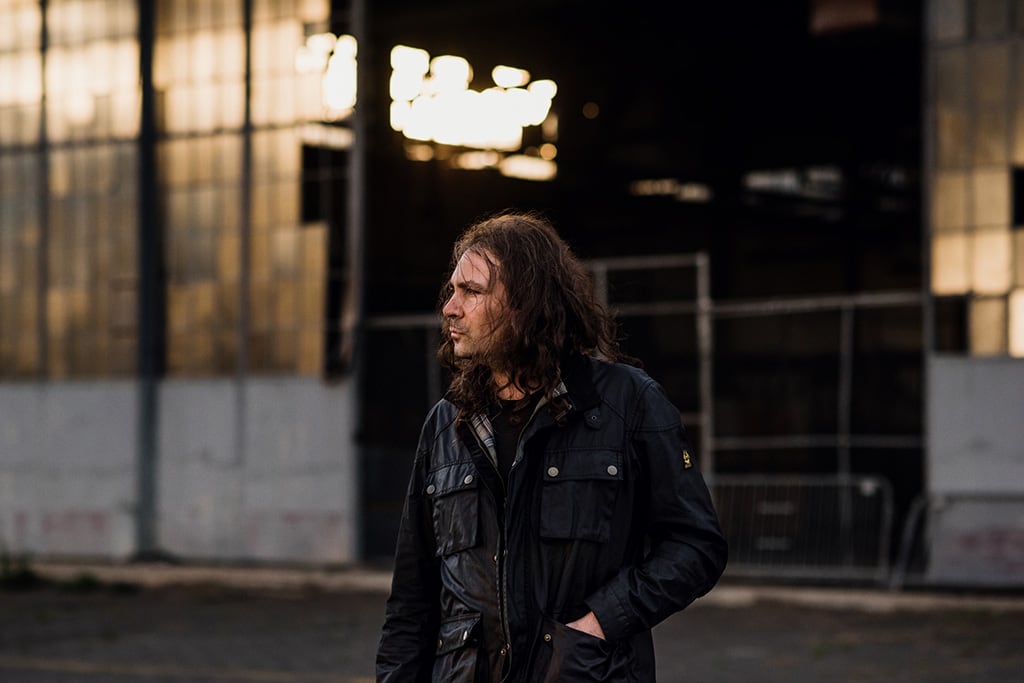


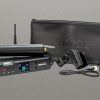


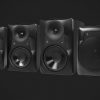


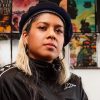















RESPONSES